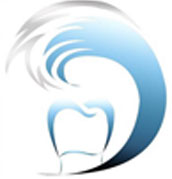Brushing is the best way to remove cavity-causing plaque and other debris from your teeth.
Plaque, a colorless, sticky substance, reacts with the bacteria and decaying food particles in your mouth and when left on the teeth long enough, begins to erode the enamel.
It is recommended that you brush your teeth three times a day, usually after meals and before bedtime.
Techniques
How long you spend brushing your teeth is as critical as how often you brush your teeth.
Here are some technique tips for brushing:

Many people simply brush for a few seconds, spit, and place the toothbrush back in the cup. It is very important to spend at least 2-3 minutes brushing your teeth. This helps to ensure that the brush doesn’t miss hard-to-reach or often neglected surfaces.
- Use short, circular motions and brush at a 45-degree angle.
- Brush all surfaces of your teeth-the sides and chewing surfaces-as well as the lower portions near the gum line.
- Gently brush other areas of your mouth, including your gums, tongue and “roof” of your mouth. These can be prime areas for bacteria to hide.
- Choose toothbrushes with soft, round-headed bristles Avoid big-headed toothbrushes. Dental associations recommend that you buy a toothbrush with a compact head-1″ by 1/2″-so you can easily reach the small areas of your mouth.
- Some toothbrushes today have wide handles. This helps you control the toothbrush better. So, choose a toothbrush with a handle that is long enough and wide enough for you to handle.
- You should replace your toothbrush at least four times a year – more often if you have been sick.



